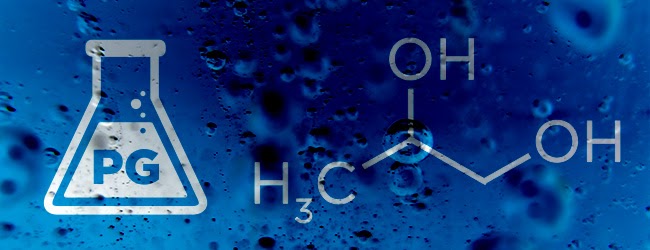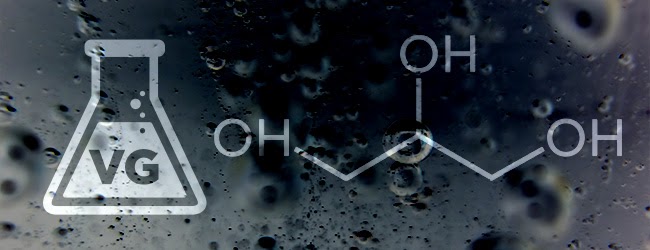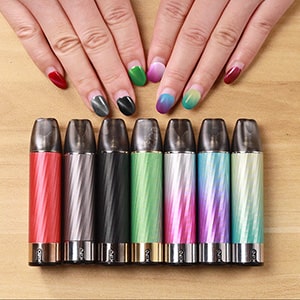Time:11-26-2020
tag:
VG (Vegetable Glycerin) vs. PG (Propylene Glycol)
When it comes to e-juice, two terms constantly crop up: VG and PG. This can seem confusing to the newcomer, but knowledge of these two ingredients can vastly improve your vaping experience. Here’s our easy-to-follow guide on everything you need to know about VG and PG.
What are PG and VG?
In simple terms, PG and VG are odorless liquids that are combined with flavor and nicotine to create e-juice. Both PG and VG technically belong to the alcohol chemical class (despite the name, they are not intoxicating). They are classified as sugar alcohols and are included in many consumable products. They produce vapor when heated, which allows them to be inhaled. Choosing the wrong PG/VG ratio can put first-timers off so be careful to choose the right level for your equipment. Now let’s take a look at each in more detail.
What is Propylene Glycol (PG)?

Propylene glycol is a colorless, almost odorless alcohol. It’s technical, chemical name is propane-1,2-diol. This tells you it has a backbone of three carbon atoms, with two oxygen-hydrogen (OH) alcohol groups attached to the first and second. It’s generally recognized as safe and is non-toxic. As a result, it’s used in a wide range of different consumer products.
It has many useful properties, including being a humectant (which means it helps to keep things moist), a preservative, and a solvent. Because of this, it’s used in cosmetics, pharmaceuticals, human and pet foods, food flavorings, and many other products. It’s also easy to vaporize, which has led to its use in asthma inhalers, theatrical fog machines, and e-juice.
You can read more about what we know about the safety of inhaling PG in this article.
What should I be aware of when vaping PG?
Some people find a high level of PG irritating to the throat. True allergies to PG are rare but have been reported. If you find yourself coming out in a rash or suffering other unpleasant reactions after using PG-based e-fluid, you may have a more common mild sensitivity to PG and should look at using high-VG juice instead. Many vendors offer this option.
The most common side effects of using e-liquid containing propylene glycol are symptoms of dehydration, like dry mouth, sore throat, and increased thirst. It is advised to drink more water and liquids than usual for the first few weeks of using your e-cigarette. If hydrated properly, these symptoms usually last anywhere from a few days to a week as the body gets used to the propylene glycol. Be aware that any unusual reactions could be side effects from quitting smoking, and not necessarily because of the PG.
What is Vegetable Glycerine (VG)?

Like PG, vegetable glycerine (VG) is alcohol. It’s colorless, odorless and sweet in taste, and more viscous than PG. It also has three “OH” alcohol groups instead of two, and its chemical name is propane-1,2,3-triol. You’ll often see it referred to as glycerol. As with PG, VG is non-toxic and generally recognized as safe to eat.
It also has a wide range of uses. This is thanks to its sweetness, it’s role as a solvent, the fact that it’s a preservative and its ability to help things retain moisture.
It’s used in pharmaceuticals (such as cough syrups, ointments and creams), cosmetics, things like hand cream and toothpaste, as a moisture-retainer in baked foods and as a solvent for things like food flavourings and colourings.
What should I be aware of when using VG?
The increased thickness of VG means it can reduce the life of atomizers quicker than PG-based juice. High VG liquids clog up coils more rapidly, and will not work well, if at all, in certain tanks. Older products are especially susceptible, particularly models that use smaller coils such as clearomizers. The Nautilus range and eGo tanks are some of the more well-known tanks that are known to have difficulties dealing with high VG fluid.
As with PG, the most common side effects of vaping high VG e-liquid are those of dehydration: dry mouth, sore throat, and increased thirst. Again, be sure to drink plenty of water and take a break from vaping if necessary.
PG vs VG - Which PG/VG Ratio is Best?
There isn’t a one-size-fits-all answer to this. It depends on the kind of vaping experience you prefer. Many people use various levels of PG and VG for different purposes:
MAX VG: “MAX” means maximum, which, as you can imagine, means that the e-liquid contains as much VG as possible, and barely any PG. Like we said, the higher the VG amount, the thicker the clouds will be. MAX VG is ideal for vapers who want to chase thick, enormous clouds more than anything else. With a MAX VG, your e-liquid will last longer as well, because it’s denser than high PG e-liquid, and so it will take longer to evaporate when heat is applied to it. However, if you’re using a MAX VG vape juice with a super high wattage level, the high output setting will likely make up the difference as it burns through more vape juice per hit.
MAX PG: This ratio contains as much PG as possible, with as little VG as possible. Like we said earlier, PG gives you more flavor and a stronger throat hit, but thinner clouds. If you’re not really interested in chasing huge clouds, but you want a nice, bold flavor and a strong hit to the throat, MAX PG may be right for you. Bear in mind that MAX PG works best with lower wattage levels because it’s so thin that high wattage levels can burn the vape juice, altering its flavor in a negative way.
90VG/10PG: This ratio is one step below MAX VG, and it will still give you enormous, dense vape clouds, but with a little more flavor and a subtle hit to the throat. This ratio is great for anyone who wants to chase clouds but doesn’t want to completely miss out on the richness of the flavor of the e-liquid. Bear in mind that with this ratio, the throat hit will be subtle.
80VG/20PG: This is one of the most popular ratios because cloud-chasers can get the massive plumes of vapor that they desire, but they still get a decent amount of flavor and a subtle throat hit. Many vapers who use high-wattage systems choose this ratio because it seems to give them everything that they desire in terms of cloud size and taste. This is also one of the most common ratios that you’ll find when you’re shopping for vape juices, so if this is the one for you, you’re in luck.
75VG/25PG: This ratio is the next step down, and it’s a bit more balanced. However, it’s less common, as there is rarely a ratio between 80/20 and 70/30. This ratio will, again, give you nicely sized clouds, and it will give you a fuller flavor, and a slight hit to the throat.
70VG/30PG: The other extremely common ratio for sub-ohm vapers. Considered to be the most popular alternative to 80/20, since it allows vapers to enjoy a bold flavor and a nice throat hit, while still getting a good amount of thick, luscious vapor. Also, one of the best ratios for high-wattage systems, aside from 80/20. The thickness of the e-liquid formula is still good enough to work with very high output levels without burning. This means that you don’t have to turn your wattage level down to accommodate this ratio.
60VG/40PG: Are less common, but still very popular, especially those who use mid-wattage devices. Because of the higher PG level, super high wattages could burn the flavor a bit, which no one wants. This ratio gives you a very nice throat hit and a great, bold flavor. You’ll still get a decent amount of cloud production; only it won’t be as thick or abundant as higher VG ratios. You can definitely still use this ratio with a sub-ohm system, but we recommend keeping the wattage level between 50-80 watts.
50VG/50PG: As you can imagine, this gives you a nice balance between cloud production, flavor and throat hit. 50/50 ratios are typically used with lower-wattage systems, such as vaping devices that don’t exceed 80 watts. The thinner consistency works best with lower output levels due to the fact that PG can burn the flavor a bit when the wattage is too high. This ratio is also the most common one found in salt-based nicotine e-juices because of how they’re used with low-wattage devices called pod mods.
Overall, Ratios Make the Vaping Difference!
Knowing how ratios affect your experience can help you make better choices in order to customize your vape sessions according to your needs. Use this guide to learn about how each alters one’s vape sessions, and then use that information to purchase vape supplies and start making your own vape juice today.
Tips for finding your sweet spot
The best way to find your PG/VG ‘sweet spot’ to experiment by making your own e-juice. It’s surprisingly easy to do, and very cost-effective. You can check this out in more detail in our DIY e-liquid guide, but here are some things to be aware of:
Steeping – If you make high VG juice, you might find this will take longer to steep. This is especially relevant to complex multi-flavor recipes. Single-flavor recipes using a high PG ratio will often take less time to steep, and sometimes be ready immediately. You can read more about this in our detailed guide to steeping e-juice.
Flavorings – The majority of flavor concentrates available are suspended in PG. It’s important to factor this in when making high VG e-juice as the higher the quantity of flavor used, the more the VG level drops. It is possible to buy flavorings suspended in VG but this is less common.
Thinning Juice – If you have made juice with a high VG ratio, your coil might have problems with wicking the thick gloopy fluid. If you don’t want to use PG, the solution is to add some distilled water to your juice—maybe a drop per 10 mL—to help thin it out. This will help the cotton absorb the fluid quicker. Don’t go overboard here… a drop goes a long way.
Unflavored juice – Want to find your sweet spot without wasting valuable resources? Try mixing VG and PG in different ratios. Using only base liquid and some cheap plastic e-liquid bottles you can find the optimal juice viscosity for your gear and avoid dry hits and leaking. This is also



 official store
official store
 ALIEXPRESS
ALIEXPRESS












